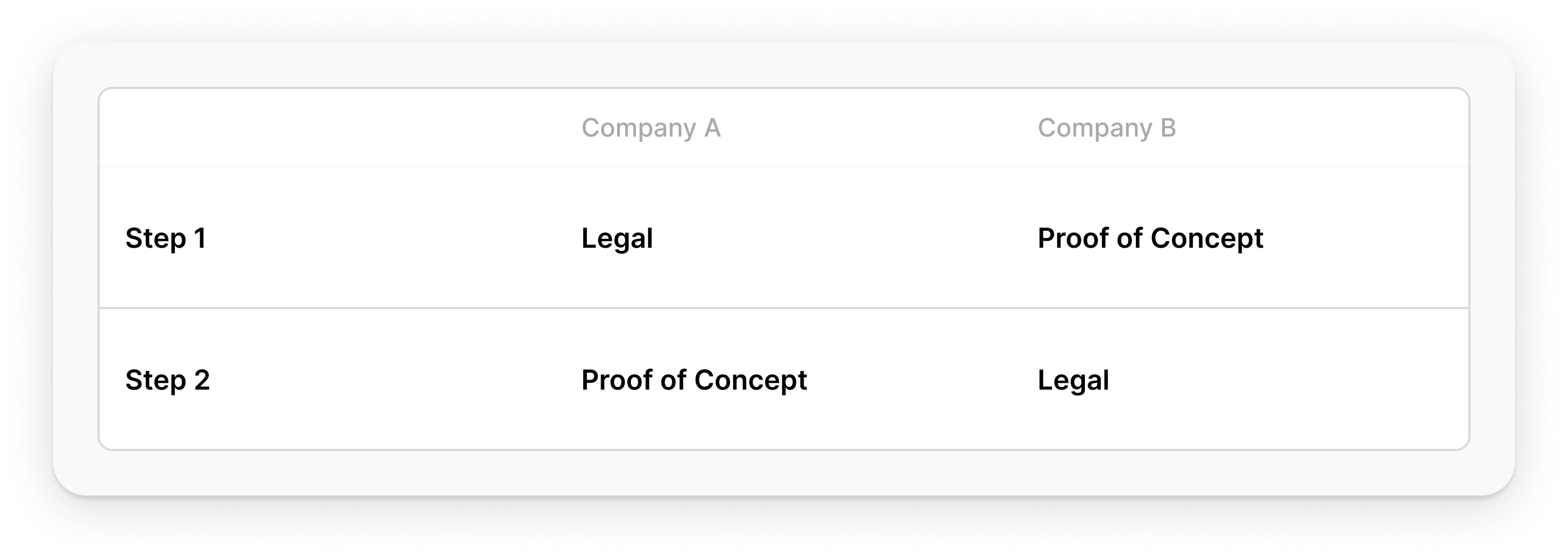This is post #2 in a series exploring “what defines a funnel,” helping you ask and answer the right questions to design the right funnel for you.
People always talk about RevOps “creating a flywheel,” or “building a machine.” But what does that actually mean? It’s about the responsibility of RevOps to create a repeatable business process that leads to a defined business goal.
Therefore in designing any process, your first step should be to define your end goal. Typically in B2B SaaS, the goal is growing recurring revenue.
Next, you must figure out how to get there. When thinking through your process, you should highlight the key milestones along the way of your prospect's journey to becoming a customer. Articulating these key milestones, what we call “steps” at Sweep, is the first piece of the puzzle in defining your funnel.
Let’s look at these two sample steps within a funnel:

While each of these funnels has the “same steps,” the order impacts the content of the steps. Legal done prior to a proof of concept will likely be focused around an NDA, and agreeing to some boilerplate terms in a Master Services Agreement or something equivalent. However, if you get to legal after a successful POC, you are likely negotiating pricing and specific terms alongside a part of your MSA. These funnels are fundamentally different in that regard.
Making sure that you can define each of these key milestones and their order clearly means you can define your funnel, and ultimately build it the right way in your CRM.
In the next post in this series, we’ll cover who owns steps and how that impacts your optimal funnel.

